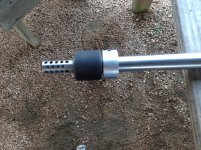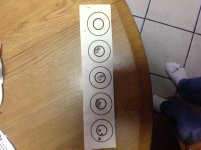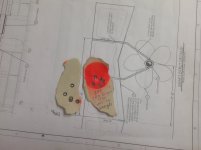This tuner assy including the lock nut weighs 7 ounces. It's on a 32 pitch thread.
I did not make it out of aluminum because I thought the thin sections between the holes might succumb to the heat and erosion of the blast.
The large shift in impact took place with about 1/4 turn, which is a little over .007 advance. That amount of shift is what lead to my hypothesis in Post #4.
I'll be interested in learning what is the reason for the large shift in POI. I have had a POI shift of 3/4" @ 100 yards on occasion with one or two barrels and when you go out to 200 I can see things like that happening. I will say that in my experience 1/4 turn is a huge change for a tuner. However, in many cases it will just repeat the same pattern that you had at the previous spot. Since you appear to have the accuracy you're looking for I don't know that it matters, but I, for one, would like to know.
Rick





